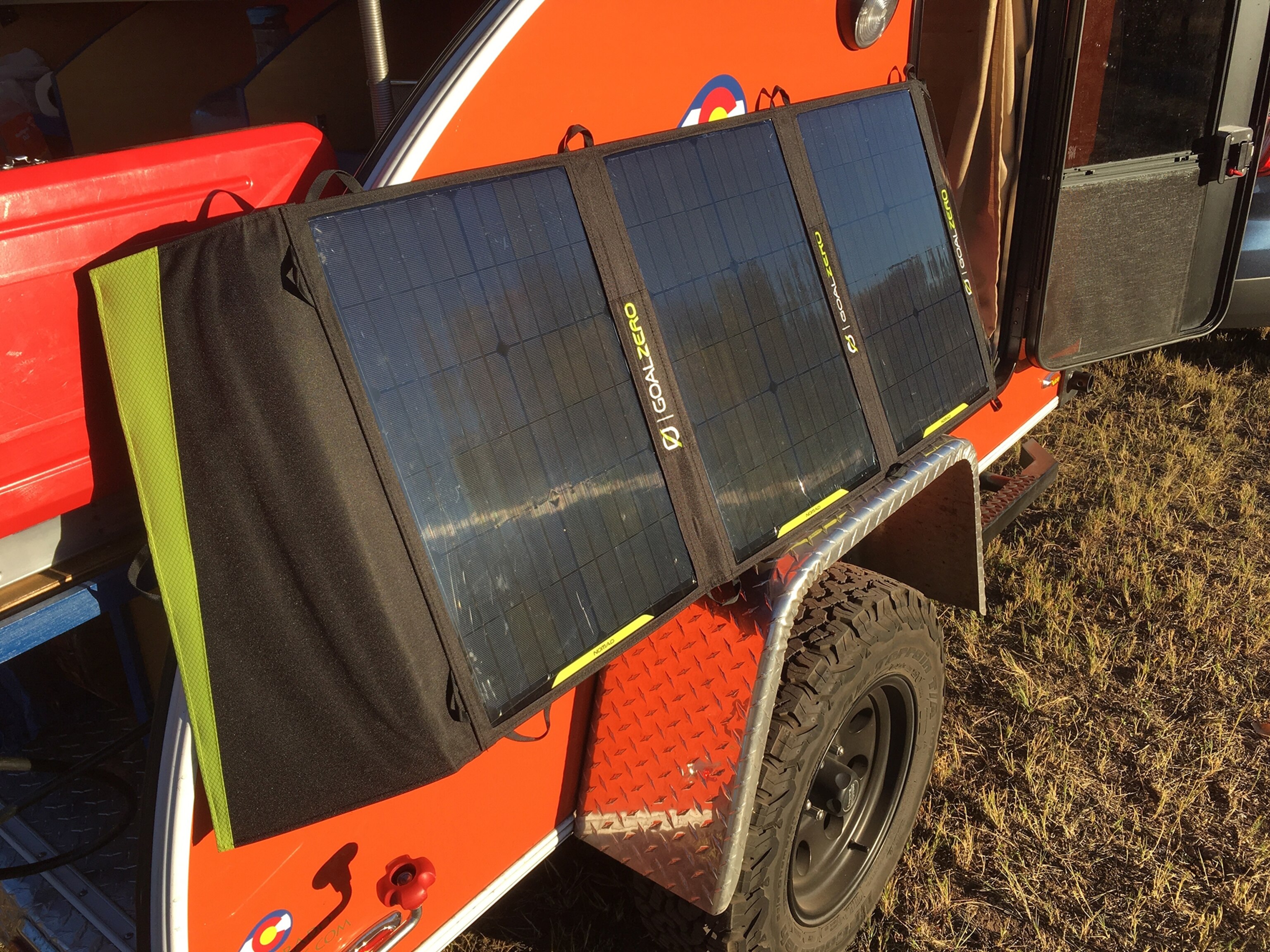Portable Power for On-the-Go Adventurers
Here’s how to keep your tech toys charged while you’re far from an electrical hookup.
The first time I needed power while out on the trail was when I did a portion of the Annapurna trek in Nepal in 1999. At the time, I was using one of the earliest point-and-shoot digital cameras, the Olympus Camedia C-900 Zoom. It was powered by four AA batteries, so I picked up two sets of rechargeable batteries and a solar charger I found at REI. This charger was just a box, slightly larger than the four AAs it held, with a three-by-four-inch solar panel on the top. I strapped it to the top of my pack to charge one set of batteries while I was trekking and shooting with the other set. Amazingly, this did the job for the fortnight we were on the trail. I even found a few telephones along the way to plug into and transmit images back to my college website. But that’s a different story.
Now we have much more sophisticated photovoltaic panels and other methods of collecting power for our adventures. At the same time, we have many more chargeable devices and they use a lot more power. Here’s a quick overview of what’s out there. We’ll dig into some of these a little more in future articles.
Solar Power
Ah, the great romantic notion that all the power we need can come from the sunlight that streams down upon us each day! It’s sort of true, but the bubble buster to the solar solution is that it takes time—usually way more time than people are willing to devote to charging.
The panels for this purpose are getting bigger and more efficient to accommodate adventurers of all sorts. Two of my favorite brands are Goal Zero and Enerplex. Both are pretty tech-savvy and easy to use, and both have a wide range of panel sizes as well as the batteries to store the power once it’s collected. Goal Zero even has a great philanthropic program to help rural communities keep the power flowing and to decrease the number of rural homes using fire (with poor ventilation) for light and power.
Heat Power
Another way to get a charge for devices is from heat, or rather, the difference in temperature between something like a fire and cool air or water. One such product is the BioLite stove. A small fire is contained in it and a metal rod sticks into the flame to charge the built-in battery. BioLite also has a philanthropic program supporting rural communities. The PowerPot for use on camp stoves is another option. The FlameStower, a small diving board that gets inserted into a flame, can be used on stoves as well as an open fire. Like solar, however, heat-powered gadgets take an incredibly long time to get a usable charge (and you must provide the fuel to maintain the heat source). But if you’re just burning to burn, this could work for you.
Chemical Power
To avoid the time that the two methods above take, companies like Brunton and myFC have been developing other ways to provide a charge on the go. Brunton has a Hydrogen Reactor that requires fuel cells. Once activated, they will instantly be ready to provide power. The company myFC came out with the PowerTrekk a few years ago that also requires little power pucks and a bit of water. The company will soon release its new product, the Jaq, which can allegedly provide power from water and salt. While PowerTrekk provides instant juice, users are limited to the number of fuel cells they bring along. The Jaq may change that.
- National Geographic Expeditions
Mechanical Power
Finally, there’s good old brute force. Mechanical generators like a hand crank or turbine are one option. Goal Zero has built a hand crank into its Lighthouse 250 lantern and Eton has been making disaster relief products like radios and lights with hand cranks for a number of years. That company now makes hand-crank batteries with USB ports for emergency power. Then there are products like HydroBee that get a charge from cranking a turbine in the flow of a stream. There are also small-scale wind turbines coming out, like the design from Nils Ferber. Again, these take time to get a useful charge.
The next question is, what kind of a power user are you in the backcountry? Just some GPS work? Shooting video? Listening to music? That will determine how much charge you need to generate to keep you going. We’ll dig into that another time.
Adventure correspondent Cameron Martindell travels the world seeking beautiful destinations and amazing adventure to document in photos, prose, and video. These adventures provide plenty of opportunities to break gear all in the name of the testing process. He contributes to Gear Institute, Elevation Outdoors, Wired, Outside, and Backpacker and maintains his own adventure website at offyonder.com. Follow him on Instagram, Twitter, Facebook, Pinterest, and Snapchat as @offyonder. He lives in Boulder, Colorado.








